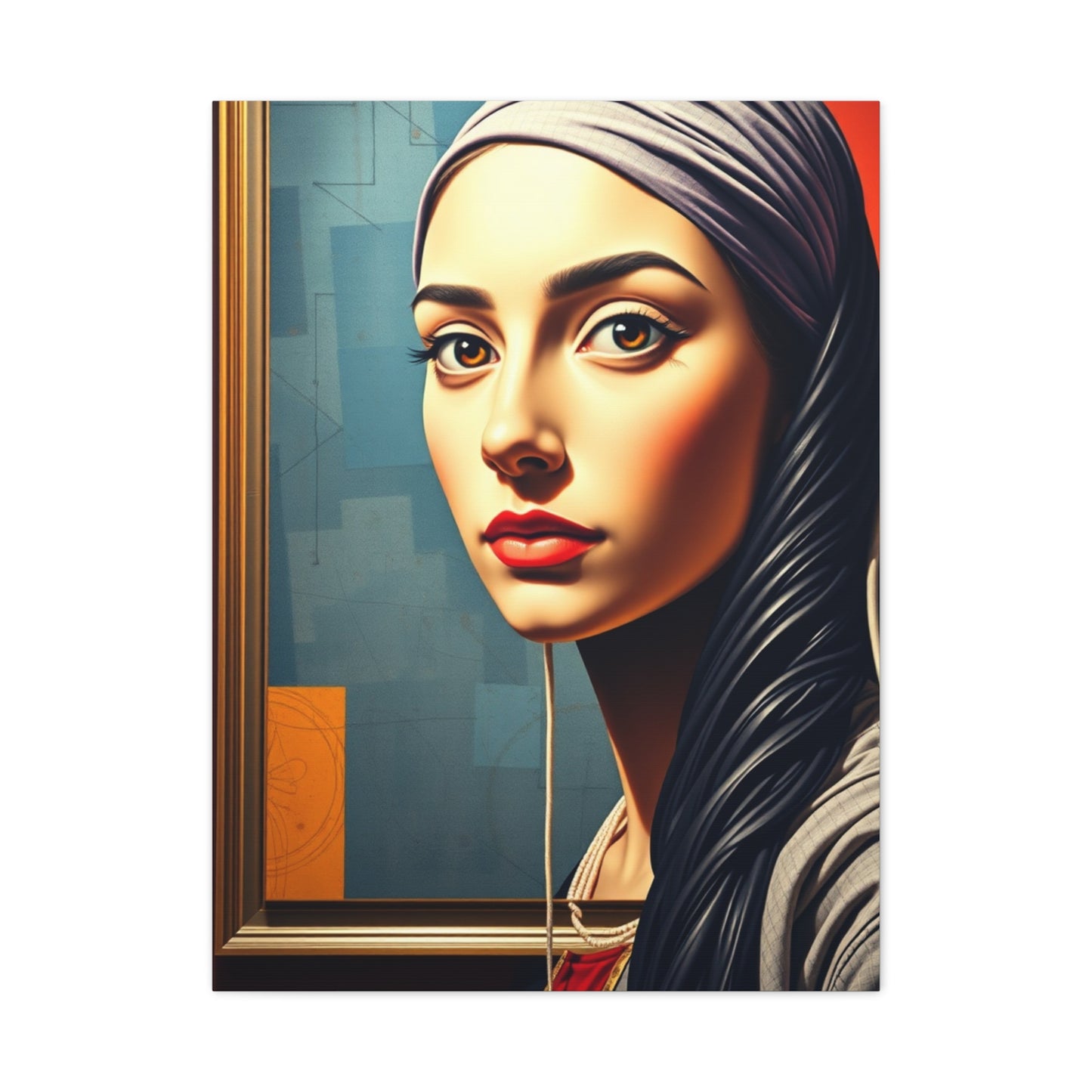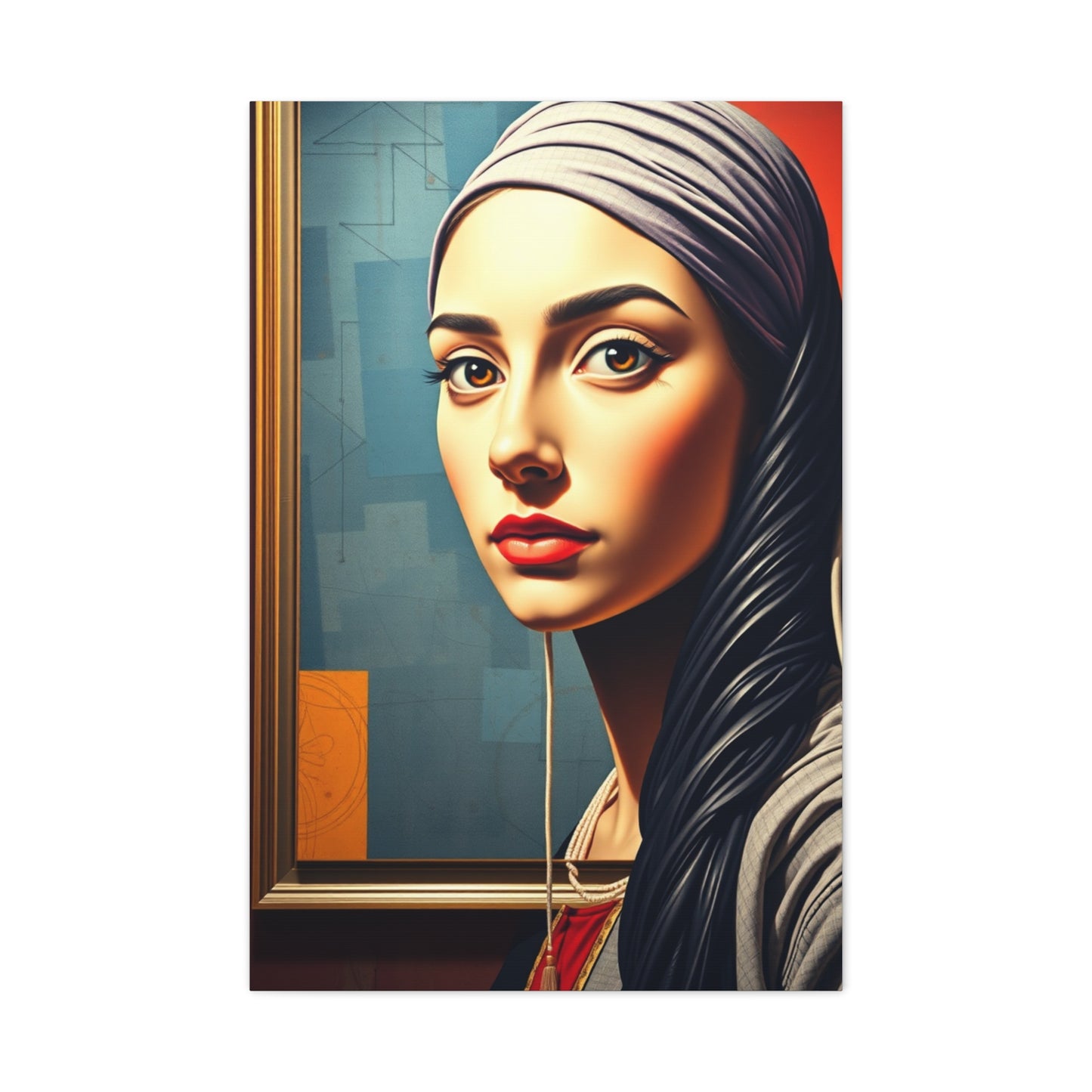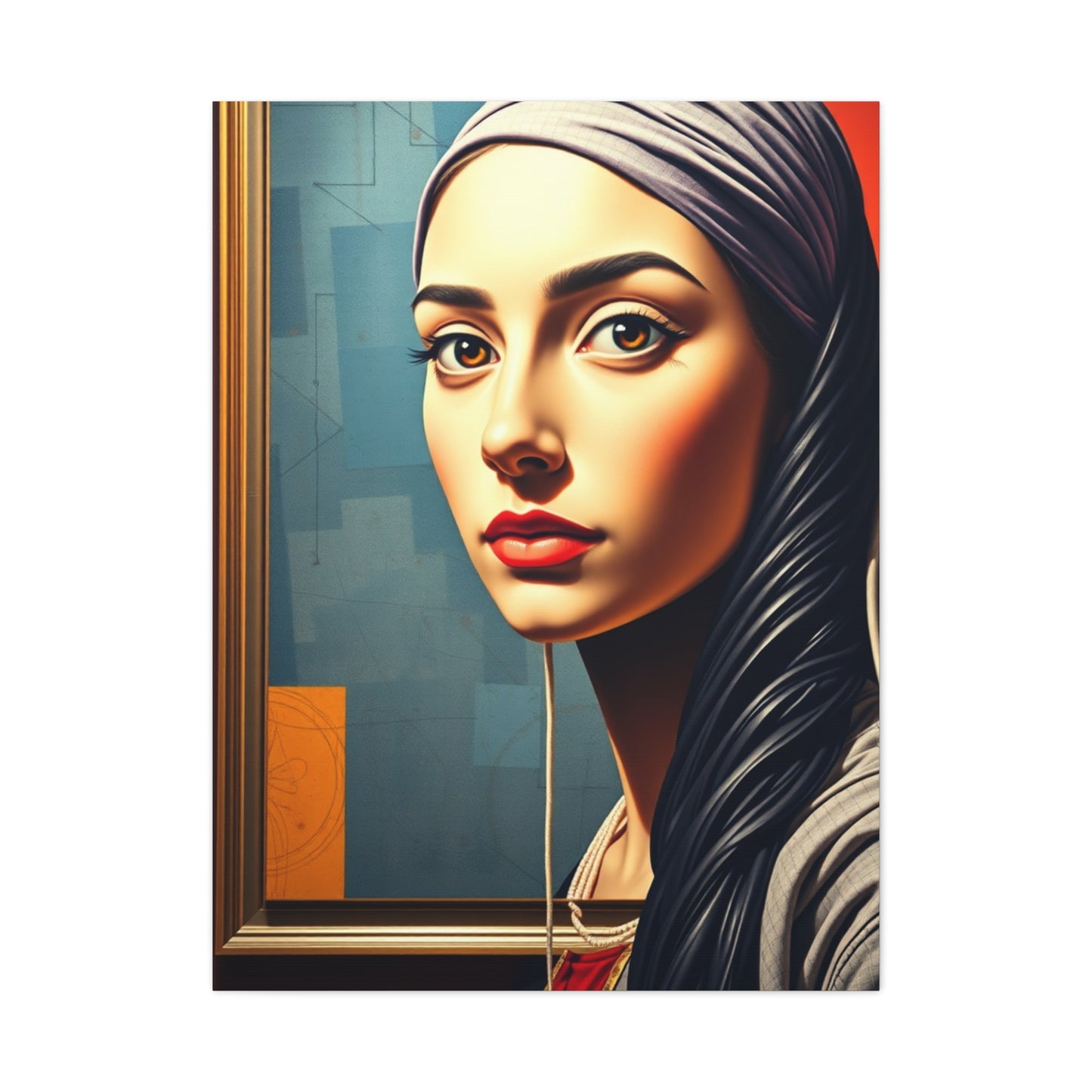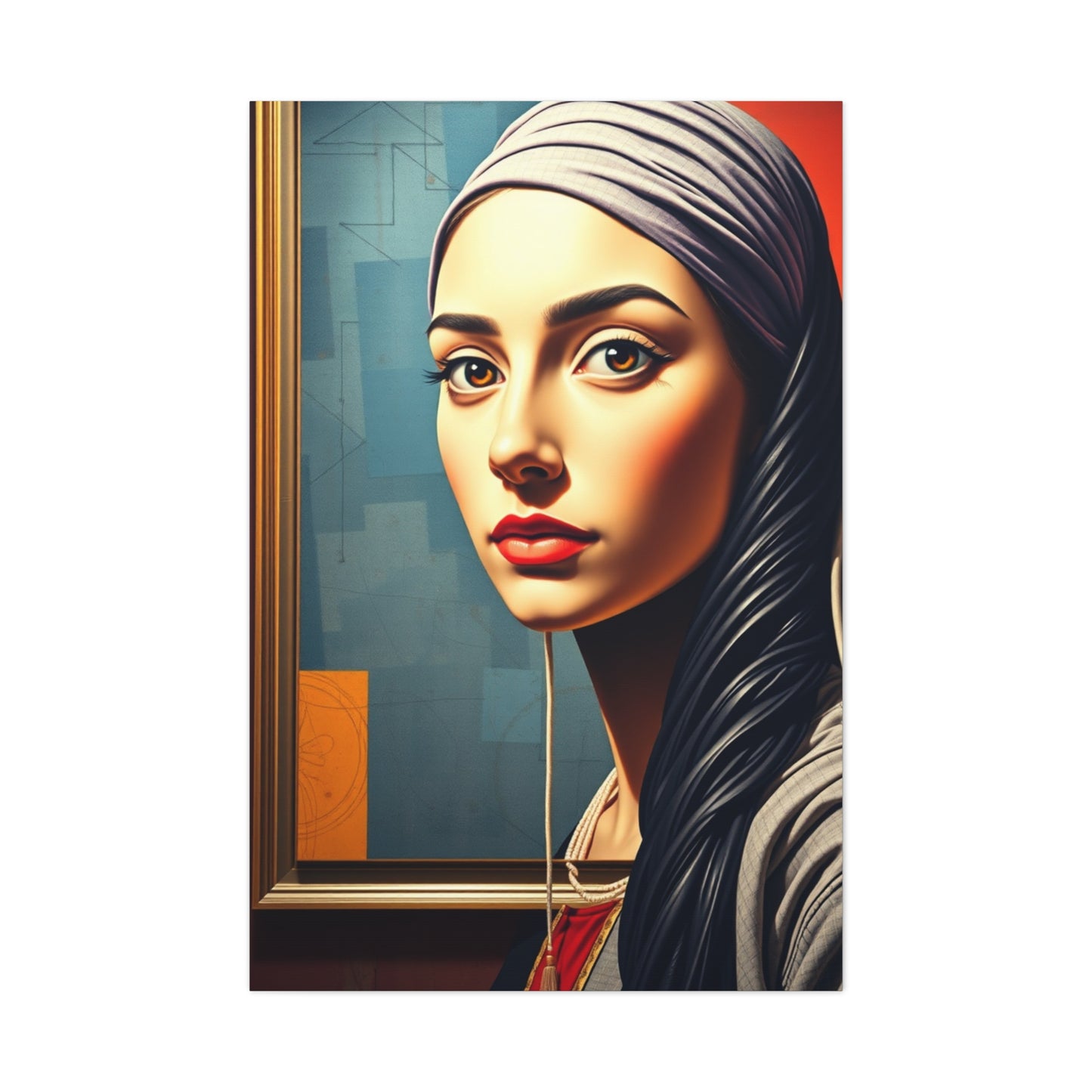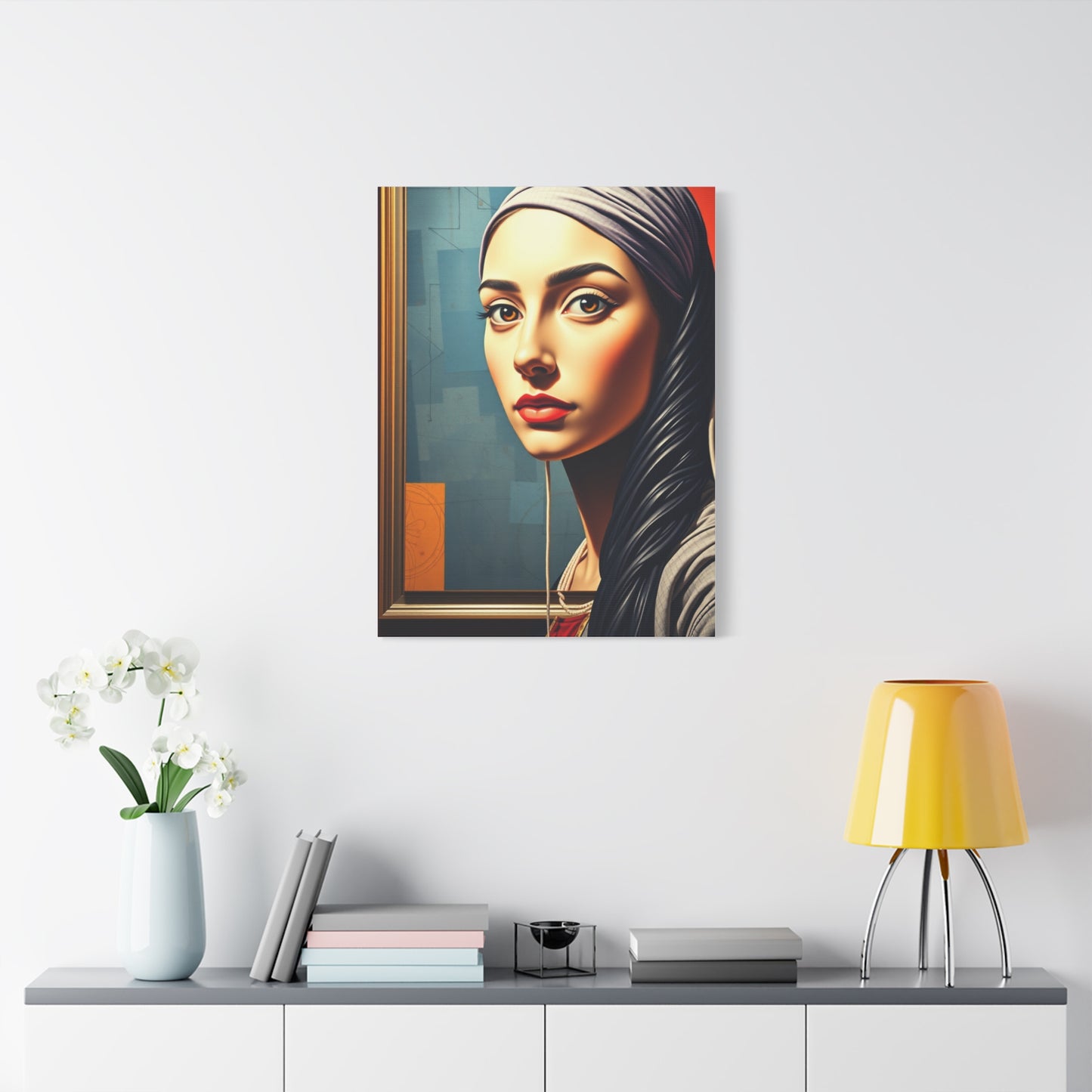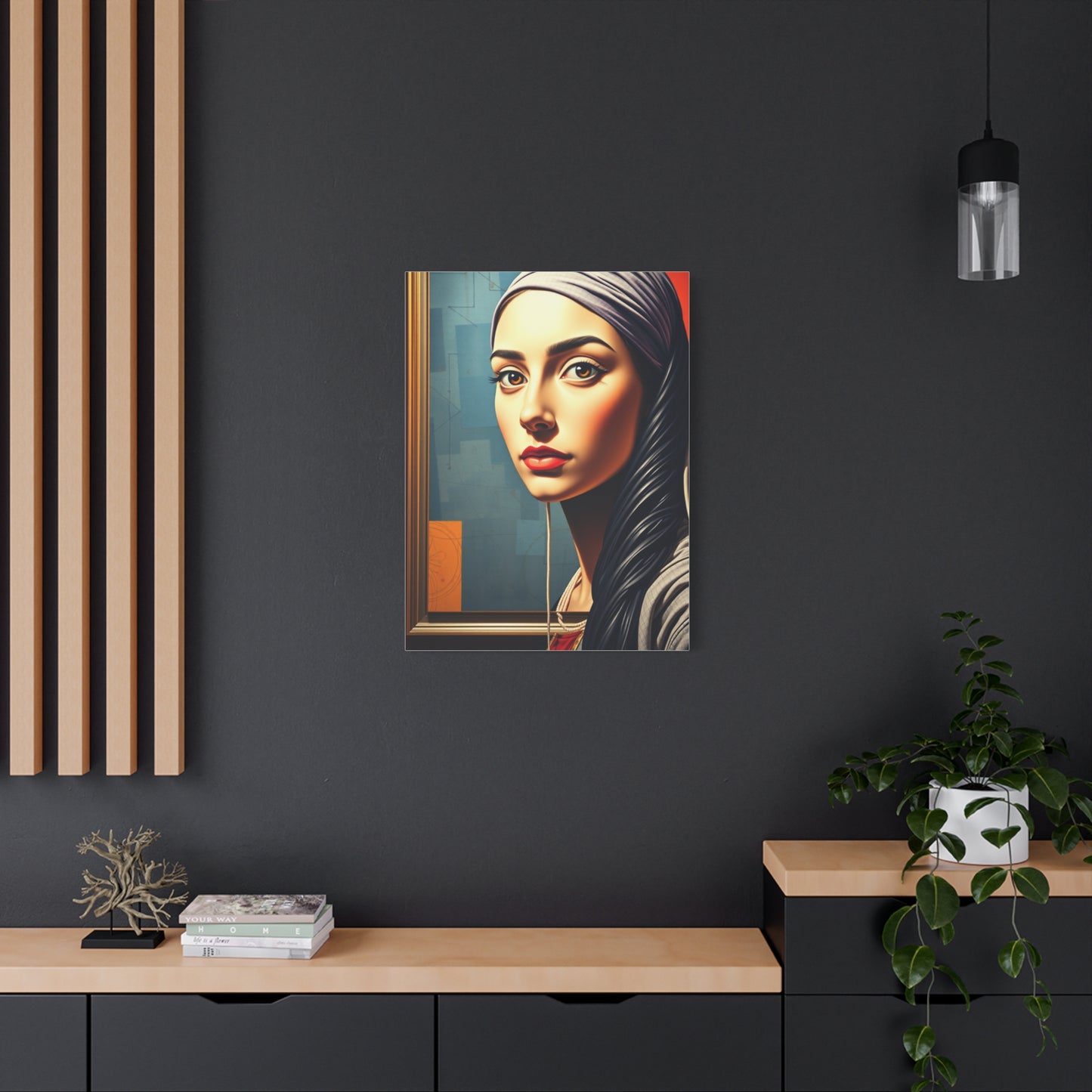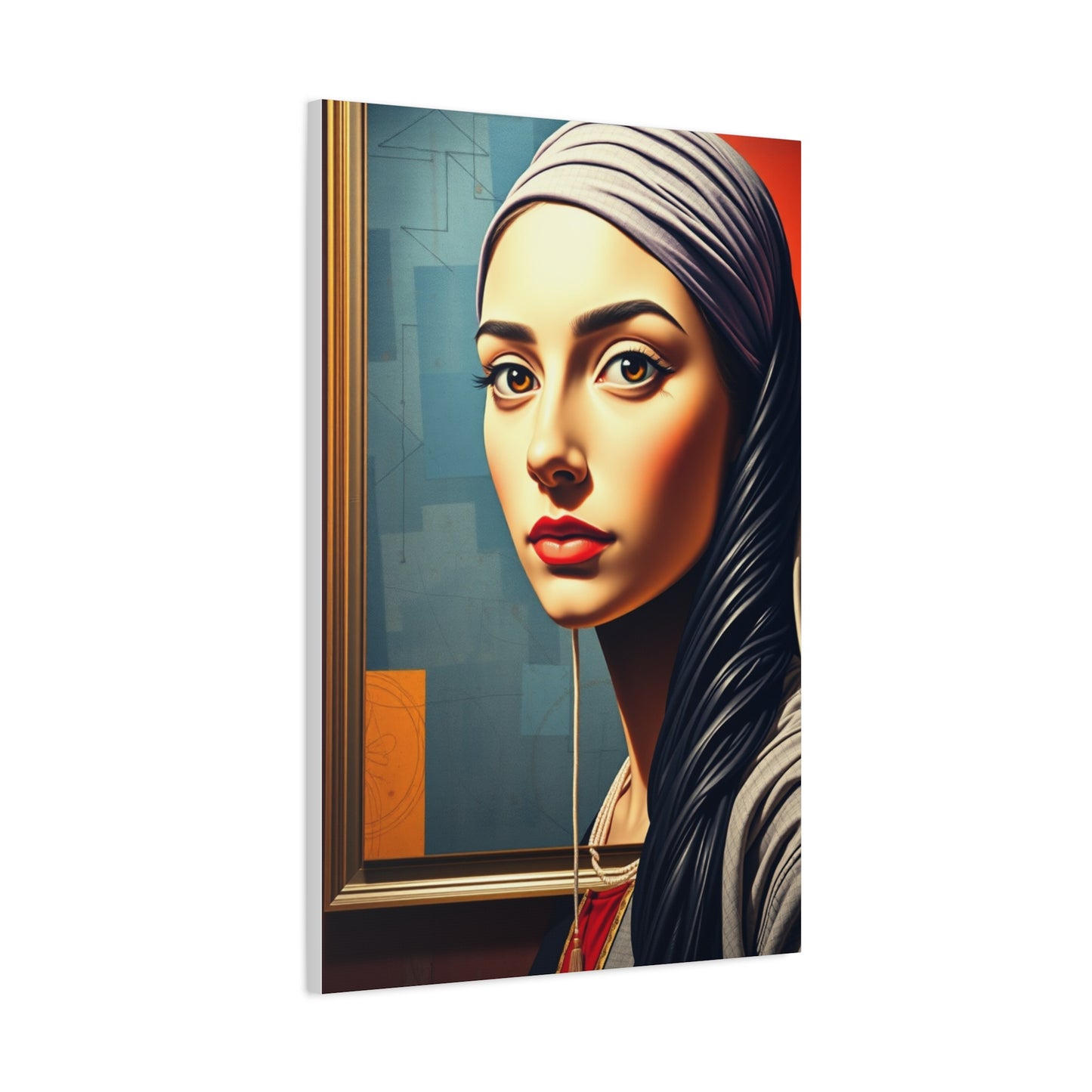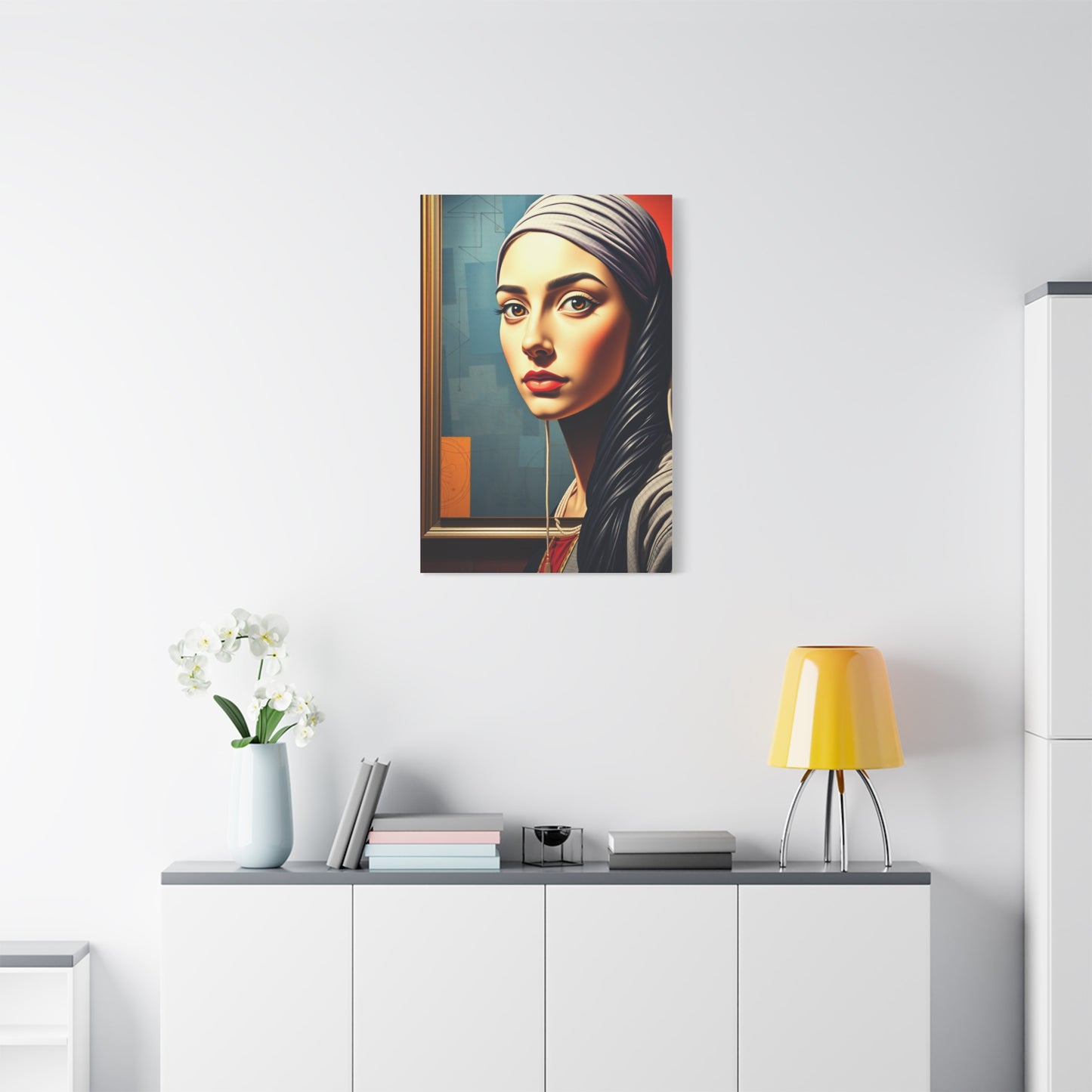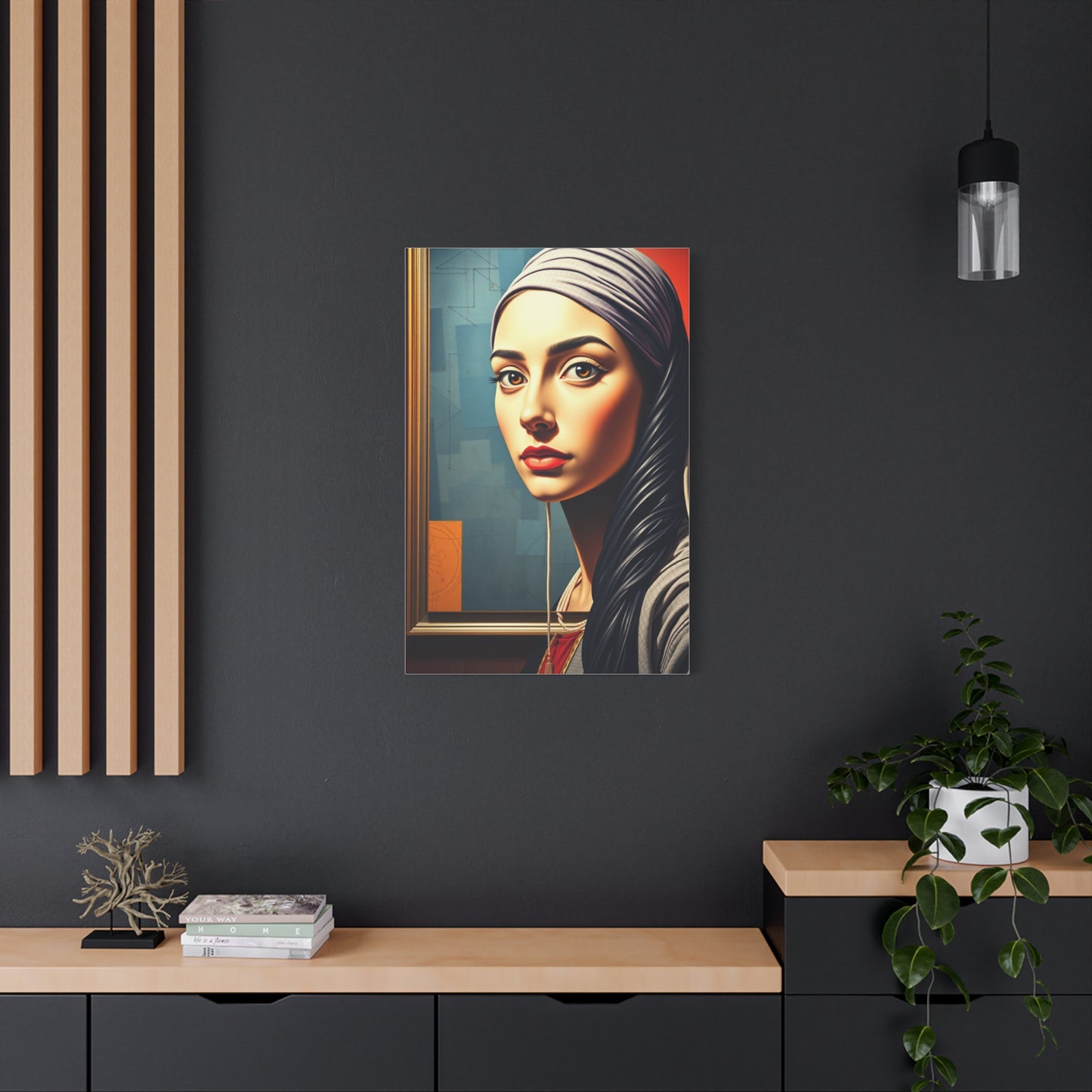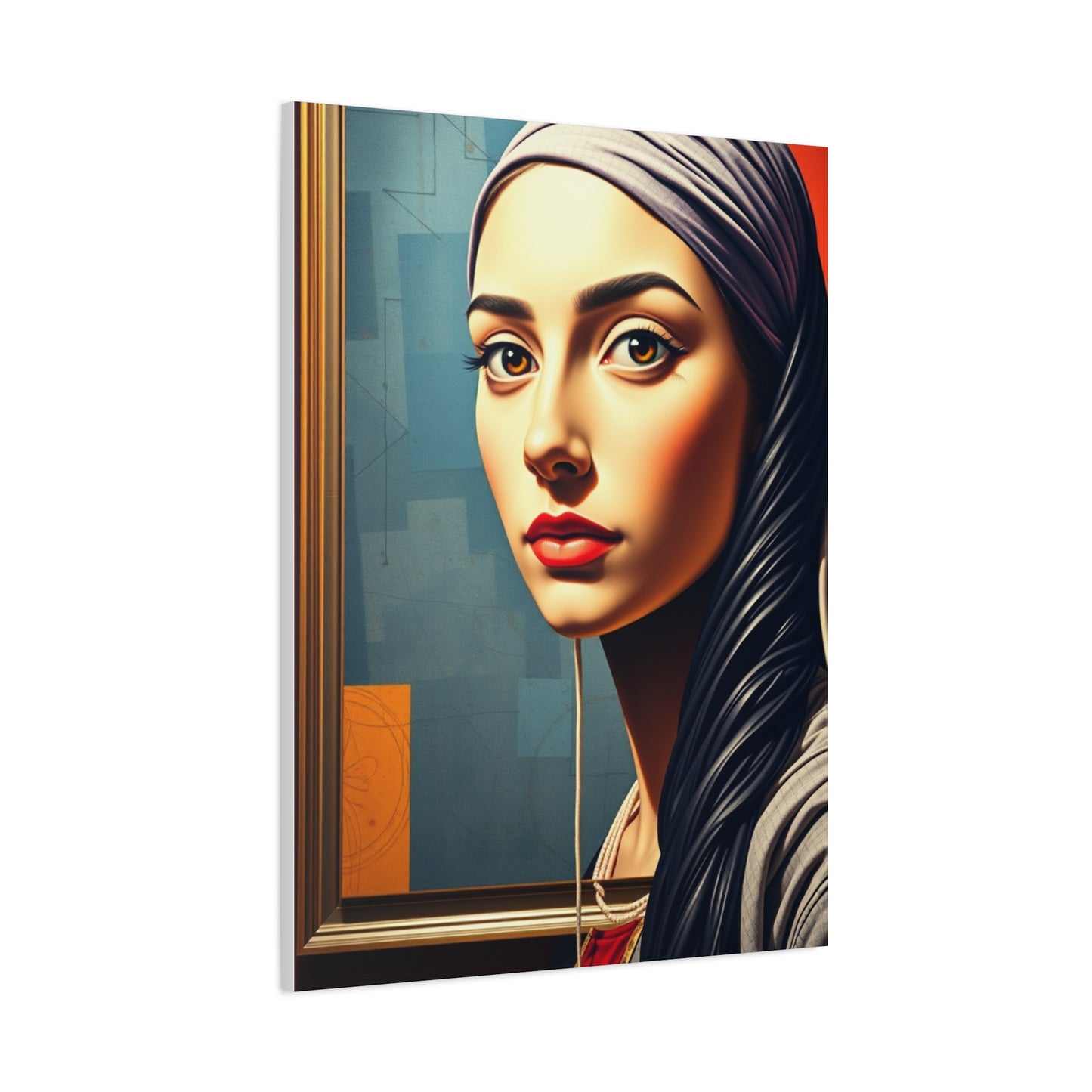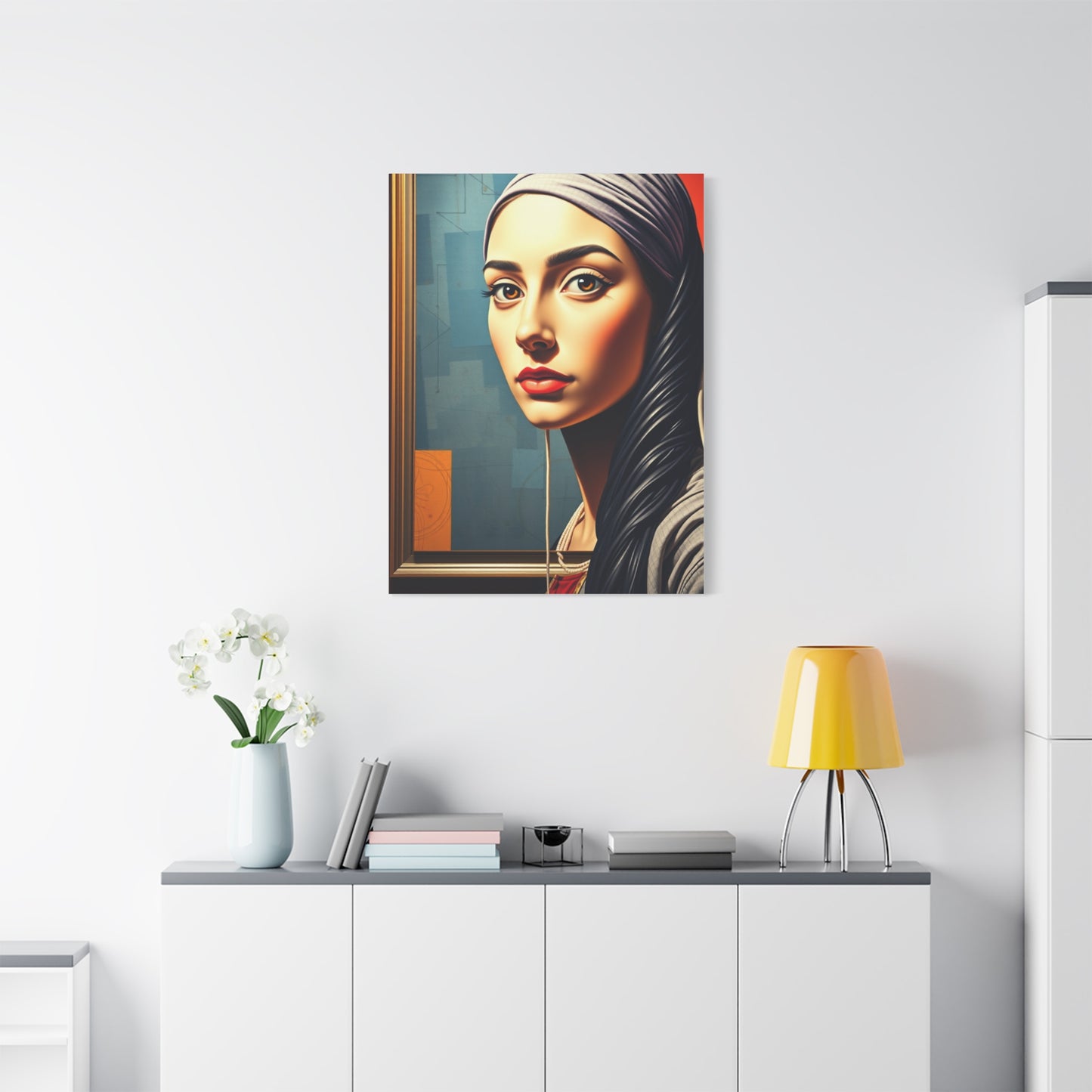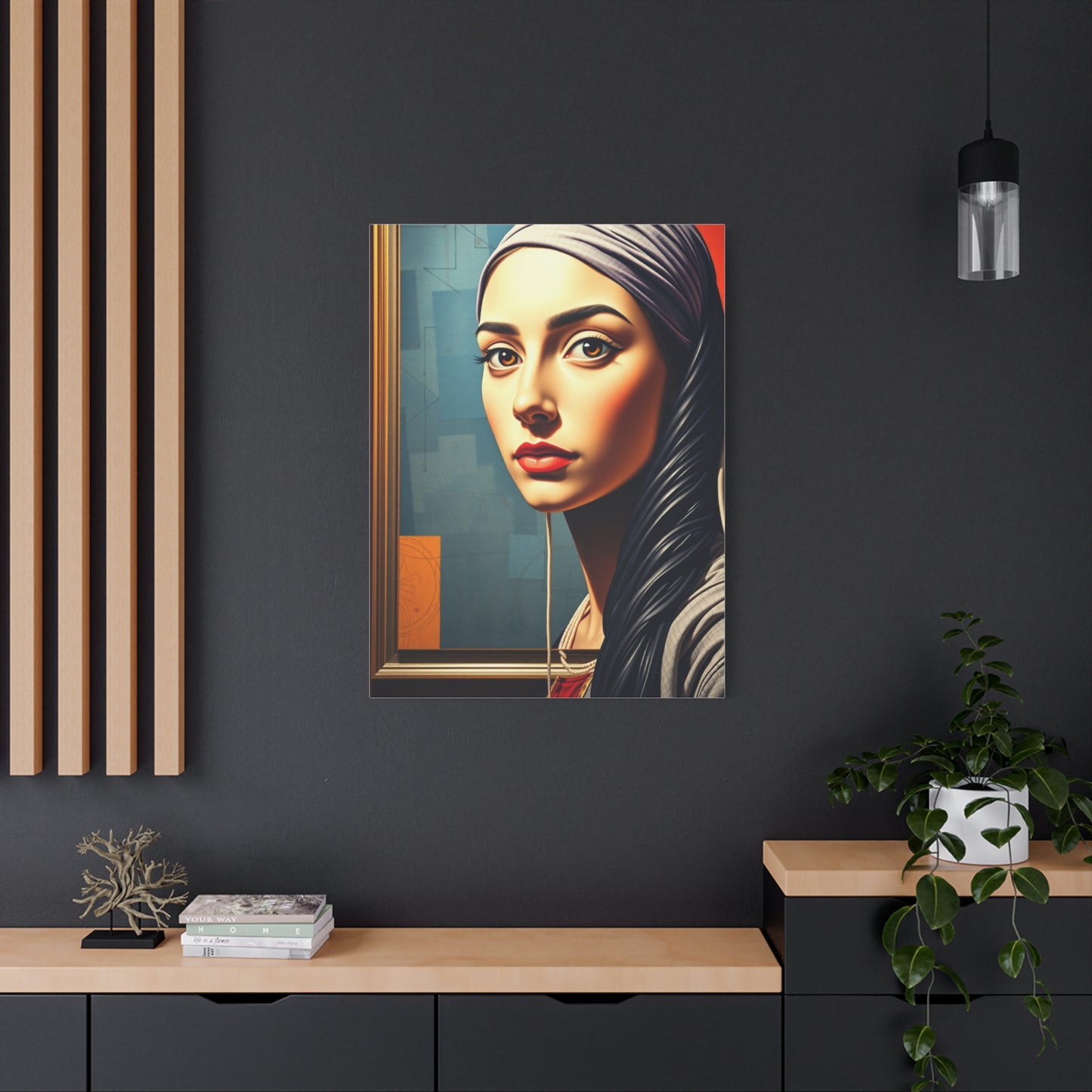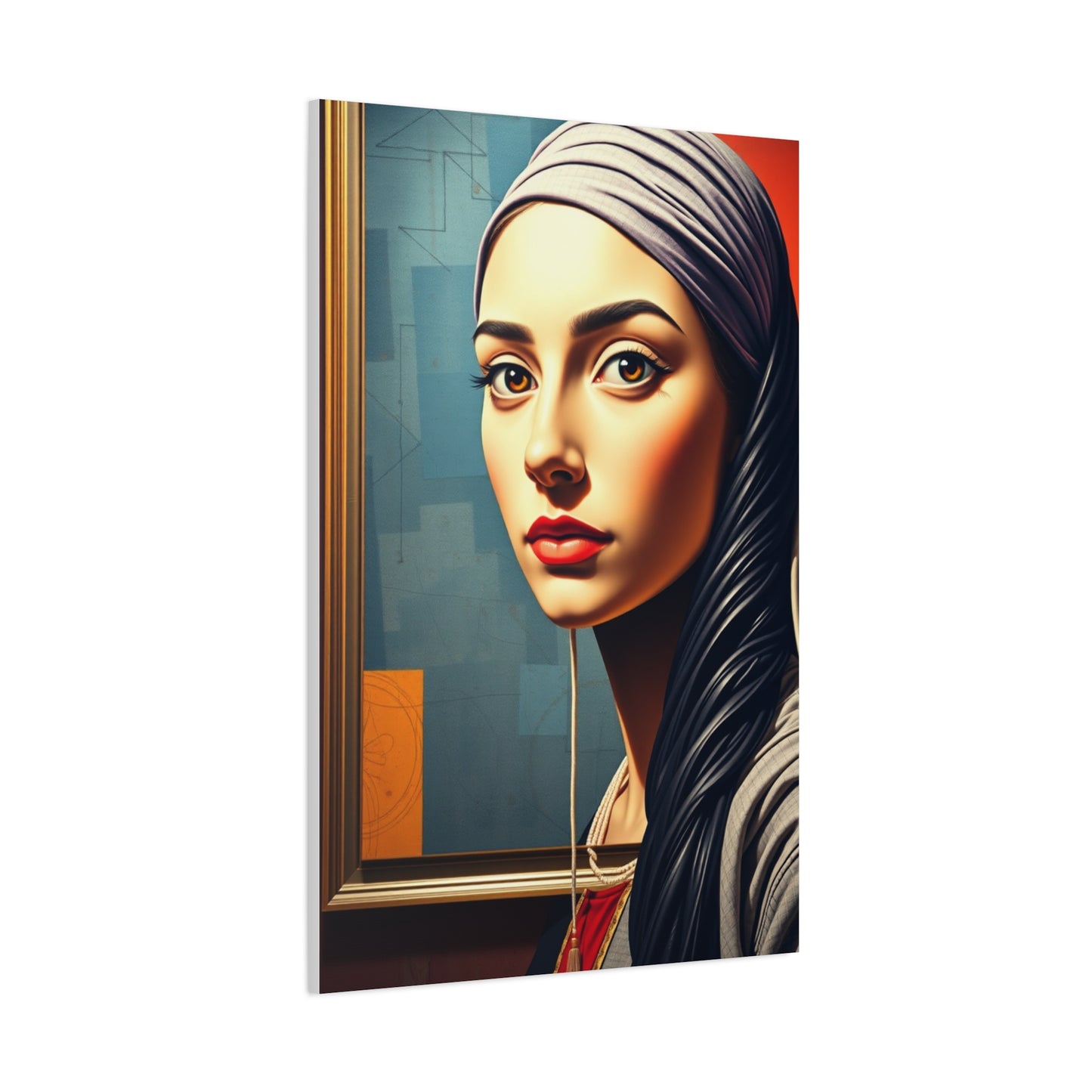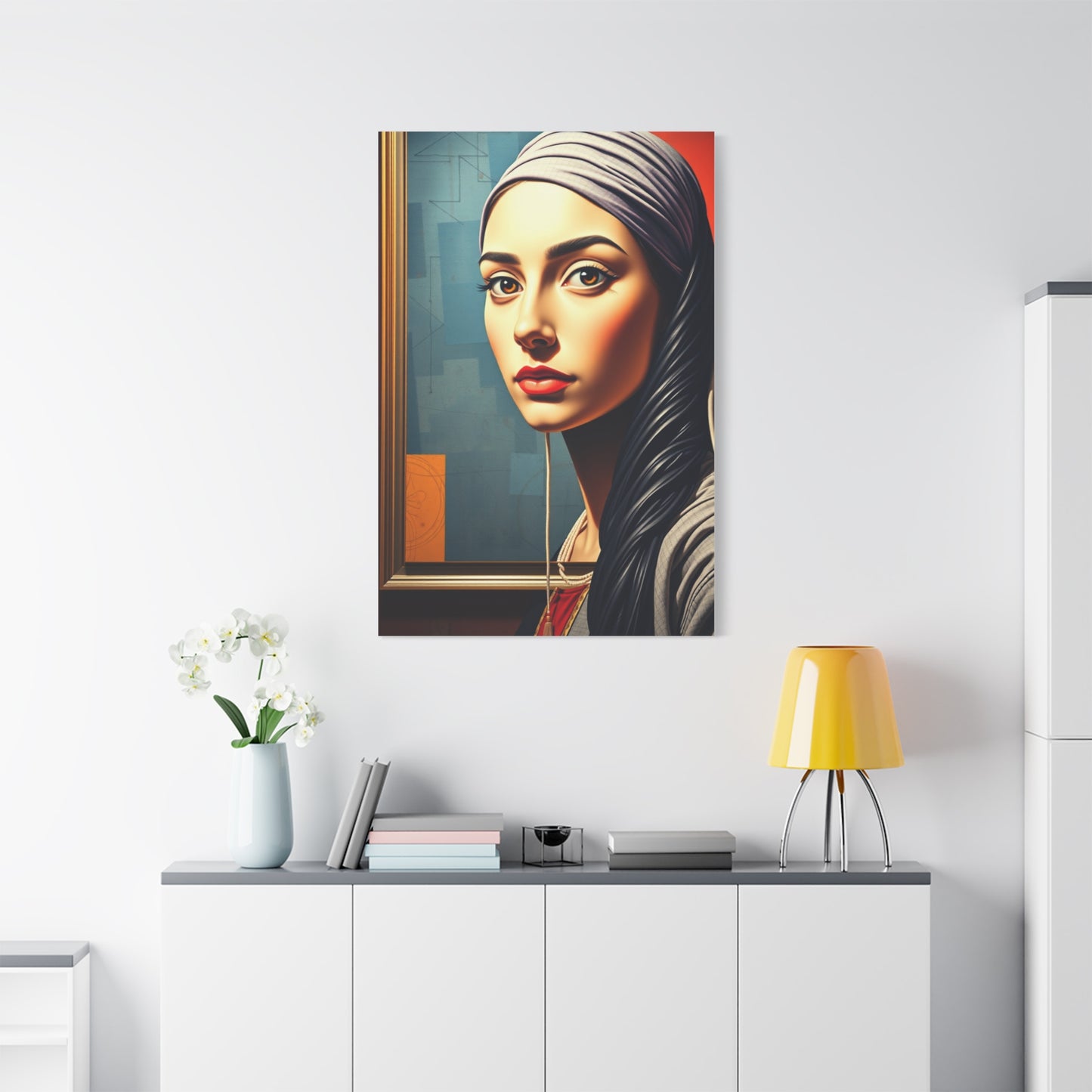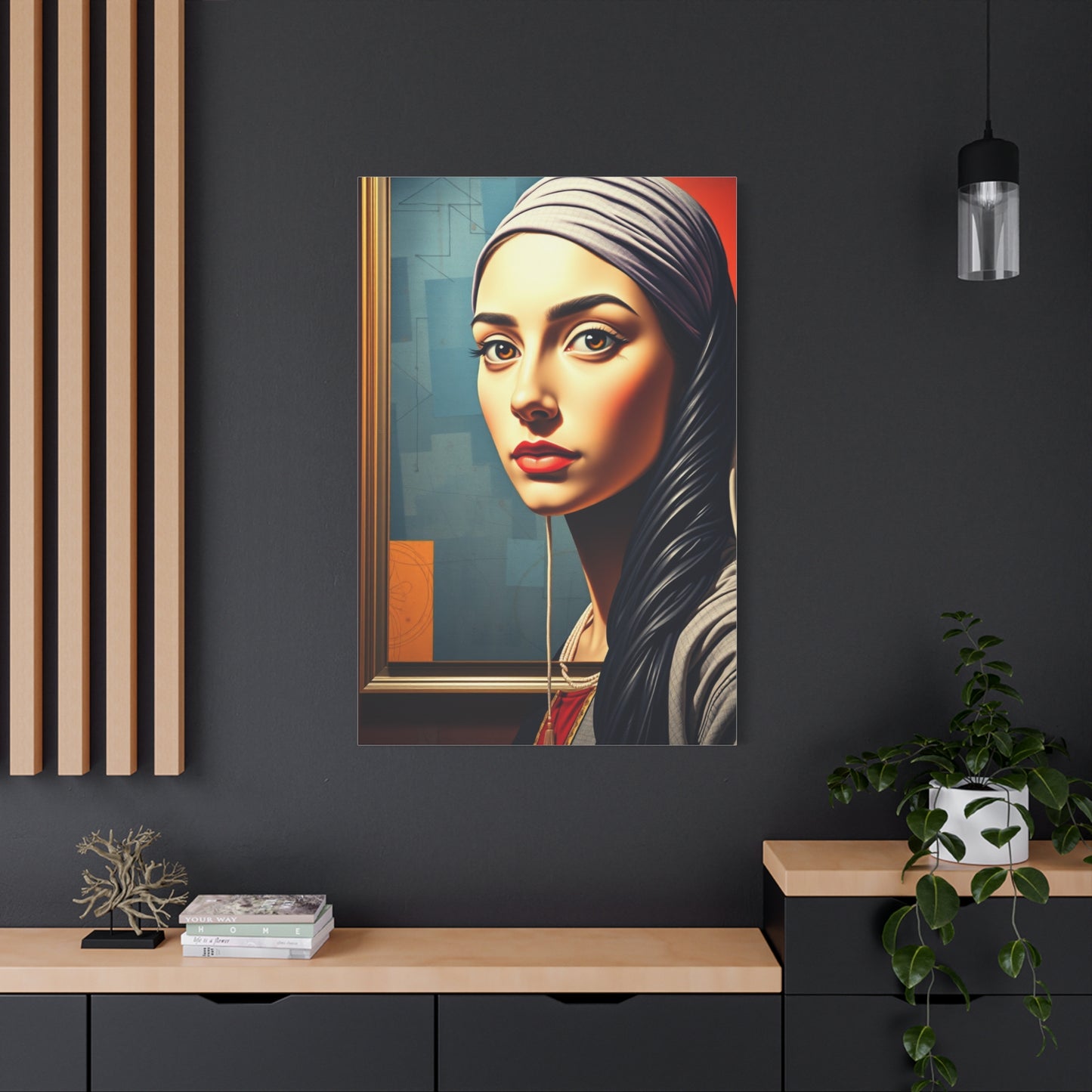Refined Aesthetic Canvas Display Wall Art: Elevate Your Space with Elegance
Canvas art has undergone a remarkable transformation throughout history, evolving from traditional oil paintings to modern digital prints that capture the essence of contemporary living. The journey of canvas as an artistic medium began centuries ago when artists discovered its durability and versatility compared to wooden panels and other surfaces. Today's refined aesthetic canvas display represents the culmination of artistic innovation and technological advancement, offering homeowners unprecedented opportunities to personalize their living environments.
The modern canvas print industry has revolutionized how we approach home decoration, making high-quality artwork accessible to a broader audience. Unlike traditional paintings that required substantial financial investment, contemporary canvas prints democratize art appreciation while maintaining exceptional visual impact. This accessibility has transformed ordinary living environments into curated galleries that reflect personal taste and sophisticated aesthetic sensibilities.
Contemporary canvas production techniques utilize advanced printing technologies that preserve color vibrancy and detail clarity for extended periods. These innovations ensure that refined aesthetic canvas displays maintain their visual appeal across decades of display, representing excellent long-term investments in home decoration. The combination of archival-quality inks and premium canvas materials creates artwork that withstands environmental factors while retaining its original beauty.
The cultural significance of canvas art extends beyond mere decoration, serving as a bridge between personal expression and artistic heritage. Modern homeowners increasingly recognize canvas prints as legitimate art forms that contribute meaningfully to their living environments. This shift in perception has elevated canvas displays from simple decorative accessories to central elements of thoughtful home design strategies.
Understanding Canvas Materials and Quality Standards
The foundation of exceptional canvas art lies in understanding the materials and manufacturing processes that determine longevity and visual appeal. Premium canvas materials typically consist of cotton or polyester blends, each offering distinct advantages for different display environments and artistic styles. Cotton canvas provides a traditional texture that closely mimics original paintings, while polyester options offer enhanced durability and resistance to environmental factors.
Canvas weight significantly impacts the final product's appearance and longevity, with heavier materials generally providing superior durability and professional presentation. Standard canvas weights range from lightweight options suitable for temporary displays to heavy-duty materials designed for permanent installations. Understanding these specifications helps consumers make informed decisions when selecting canvas art for their homes.
The texture of canvas material influences how light interacts with printed images, affecting the overall visual impact of displayed artwork. Smooth canvas surfaces provide crisp detail reproduction ideal for photographic prints, while textured options add depth and character to artistic reproductions. This variety allows homeowners to select canvas textures that complement their existing decor while achieving desired aesthetic effects.
Printing processes employed in modern canvas production utilize sophisticated color management systems that ensure accurate reproduction of original artwork. These systems calibrate printer output to match source materials precisely, resulting in canvas prints that faithfully represent artists' original intentions. The combination of advanced printing technology and premium canvas materials produces artwork that rivals traditional painting techniques in visual impact and longevity.
Quality control measures implemented by reputable canvas manufacturers include color accuracy testing, material durability assessments, and finish quality inspections. These comprehensive evaluation processes ensure that each canvas print meets established standards for visual appeal and longevity. Consumers benefit from these quality assurance practices through improved product reliability and enhanced satisfaction with their art purchases.
Color Theory and Visual Impact in Canvas Displays
Color psychology plays a fundamental role in determining the emotional and aesthetic impact of canvas art within living environments. Different color combinations evoke specific psychological responses, influencing mood, energy levels, and overall comfort within decorated areas. Understanding these principles enables homeowners to select canvas art that enhances their desired atmospheric conditions while complementing existing decor elements.
Warm color palettes, including reds, oranges, and yellows, create inviting and energetic environments that encourage social interaction and active engagement. These colors work particularly well in gathering areas such as living rooms and dining areas where family members and guests congregate regularly. Canvas prints featuring warm color schemes can transform neutral environments into vibrant, welcoming areas that reflect hospitality and warmth.
Cool color combinations, encompassing blues, greens, and purples, promote relaxation and contemplation, making them ideal choices for bedrooms, reading areas, and meditation environments. These calming hues reduce stress levels and create serene atmospheres conducive to rest and introspection. Canvas art incorporating cool colors can serve as focal points that anchor peaceful environmental designs while providing visual interest without overwhelming sensory input.
Monochromatic color schemes offer sophisticated alternatives that emphasize texture, form, and composition rather than chromatic variety. These approaches work exceptionally well in minimalist design contexts where simplicity and elegance take precedence over bold visual statements. Canvas prints utilizing monochromatic palettes demonstrate refined aesthetic sensibilities while maintaining visual interest through subtle tonal variations and compositional elements.
Complementary color relationships create dynamic visual tension that draws attention and maintains viewer engagement over extended periods. These color combinations utilize opposite positions on the color wheel to generate vibrant contrasts that energize living environments without creating visual chaos. Strategic use of complementary colors in canvas art can establish powerful focal points that define architectural features and direct traffic flow through decorated areas.
Size Selection and Proportional Considerations
Selecting appropriate canvas dimensions requires careful consideration of room proportions, viewing distances, and existing architectural features. Oversized artwork can overwhelm smaller areas, while undersized pieces may appear insignificant within larger environments. Achieving optimal visual balance requires understanding the mathematical relationships between canvas dimensions and available wall areas.
The golden ratio principle provides valuable guidance for determining ideal canvas proportions relative to wall dimensions and surrounding furniture arrangements. This classical aesthetic principle suggests that artwork should occupy approximately one-third to two-thirds of available wall height, creating harmonious proportional relationships that feel naturally balanced. Applying golden ratio principles helps ensure that canvas selections enhance rather than compete with existing architectural elements.
Viewing distance calculations influence both canvas size selection and placement decisions within decorated environments. Artwork intended for close examination benefits from smaller dimensions that allow detailed observation, while pieces designed for distant viewing require larger formats to maintain visual impact. Understanding these relationships helps homeowners select canvas sizes that function effectively within their specific environmental contexts.
Multiple canvas arrangements, such as diptychs and triptychs, offer flexible sizing solutions that adapt to various wall configurations while maintaining unified artistic themes. These multi-panel approaches allow for creative sizing options that fill larger wall areas without requiring single oversized pieces. The spacing between individual panels becomes an important design element that affects overall visual cohesion and impact.
Custom sizing options available through many canvas providers enable precise fitting solutions for challenging architectural features such as stairwells, alcoves, and irregular wall configurations. These personalized approaches ensure optimal integration between artwork and environmental features while maintaining intended aesthetic effects. Custom sizing eliminates compromise solutions that may diminish overall design effectiveness.
Framing Options and Presentation Techniques
Canvas framing choices significantly influence the final presentation and perceived value of displayed artwork. Traditional wooden frames provide classical elegance that complements various decorative styles while offering protection for canvas edges. These framing options range from simple, understated designs to elaborate, ornamental styles that become decorative elements themselves.
Gallery wrap techniques create seamless presentations where printed images extend around canvas edges, eliminating the need for traditional framing while maintaining professional appearance standards. This approach works particularly well with contemporary and minimalist design schemes where clean lines and uncluttered presentations take priority. Gallery wraps offer cost-effective framing solutions without sacrificing visual appeal or professional presentation quality.
Floating frame systems create sophisticated presentations that separate canvas surfaces from frame contact, generating subtle shadow lines that enhance dimensional perception. These modern framing approaches work exceptionally well with contemporary artwork and minimalist design contexts where subtle details contribute to overall aesthetic impact. Floating frames protect canvas edges while maintaining clean, unobstructed viewing experiences.
Metal framing options provide sleek, contemporary alternatives to traditional wooden frames, offering durability and modern aesthetic appeal. These materials resist environmental damage while providing long-term protection for canvas artwork. Metal frames work particularly well in modern and industrial design contexts where material consistency and clean lines contribute to overall environmental coherence.
Matting considerations add another layer of presentation complexity, with options ranging from simple white borders to elaborate multiple-mat configurations. Proper matting creates visual separation between artwork and framing elements while providing opportunities for color coordination and aesthetic enhancement. Understanding matting principles helps homeowners achieve professional presentation standards that elevate their canvas displays.
Lighting Considerations for Canvas Art Display
Proper illumination transforms canvas art from simple wall decoration into dynamic visual elements that command attention and enhance environmental ambiance. Understanding lighting principles enables homeowners to maximize the visual impact of their canvas collections while protecting artwork from harmful light exposure that can cause fading and deterioration over time.
Natural lighting provides the most accurate color reproduction for canvas art, revealing subtle details and color variations that artificial lighting may obscure. However, direct sunlight poses significant risks to canvas longevity through UV radiation exposure that breaks down pigments and canvas fibers. Strategic placement near windows with filtered light offers optimal viewing conditions while minimizing damage risks through controlled exposure.
Artificial lighting systems designed specifically for artwork provide controlled illumination that enhances canvas displays while protecting them from harmful light wavelengths. LED lighting technologies offer energy-efficient solutions that produce minimal heat while delivering excellent color rendering capabilities. These systems allow for precise control over intensity and color temperature to achieve desired atmospheric effects.
Track lighting systems provide flexible illumination solutions that adapt to changing canvas arrangements and seasonal decorating updates. These adjustable systems enable homeowners to highlight specific pieces while maintaining overall environmental lighting balance. Track lighting works particularly well in gallery-style arrangements where multiple canvas pieces require individual attention.
Accent lighting techniques create dramatic effects that transform canvas displays into focal points that anchor entire decorative schemes. These approaches utilize directional lighting to emphasize texture, dimensionality, and color relationships within displayed artwork. Strategic accent lighting can create evening ambiance that transforms living environments after natural light diminishes.
Picture lighting systems mounted directly on frames or walls provide dedicated illumination for individual canvas pieces, ensuring optimal viewing conditions regardless of ambient lighting levels. These specialized systems offer precise control over light distribution and intensity, allowing for fine-tuning that maximizes visual impact. Picture lights work particularly well with valuable or significant artwork that deserves individual attention.
Room-Specific Canvas Selection Strategies
Different living areas require distinct approaches to canvas art selection based on functional requirements, traffic patterns, and atmospheric goals. Understanding these environmental factors enables homeowners to choose artwork that enhances specific room functions while contributing to overall home aesthetic coherence.
Living room canvas selections should reflect family personalities while providing conversation starters that encourage social interaction. These central gathering areas benefit from artwork that creates welcoming atmospheres without overwhelming guests or family members with overly personal or controversial imagery. Scale considerations become particularly important in living rooms where seating arrangements determine viewing distances and angles.
Bedroom canvas art should promote relaxation and personal reflection, utilizing calming color palettes and peaceful imagery that support restful sleep and morning tranquility. These private environments offer opportunities for more personal artistic expressions that may not be appropriate in public areas of the home. Size selection should consider bed placement and ensure that artwork remains visible without dominating the sleep environment.
Kitchen canvas displays must withstand higher humidity levels and temperature variations while maintaining visual appeal in utilitarian environments. Food-themed artwork, botanical prints, and abstract compositions work well in these functional areas where practicality and aesthetics must coexist harmoniously. Easy cleaning becomes an important consideration for kitchen artwork exposed to cooking residues and moisture.
Bathroom canvas art requires moisture-resistant materials and treatments to prevent damage from humid conditions while adding visual interest to often-overlooked areas. These challenging environments benefit from sealed canvas treatments and appropriate ventilation to ensure longevity. Smaller canvas sizes typically work best in bathroom environments where wall area is limited and functionality takes precedence.
Home office canvas selections should inspire productivity while reflecting professional image requirements for clients or colleagues who may visit the workspace. Motivational imagery, abstract compositions, and sophisticated color schemes work well in these environments where focus and creativity are essential. Avoid overly distracting artwork that may interfere with work concentration.
Digital Art and Modern Canvas Applications
The digital revolution has transformed canvas art possibilities, enabling artists to create sophisticated compositions that blend traditional techniques with contemporary technology. Digital art forms offer infinite reproducibility without quality loss, making high-end artistic designs accessible to broader audiences while maintaining exceptional visual standards.
Photography-based canvas prints represent one of the most popular modern applications, transforming personal photographs into professional artwork displays. High-resolution digital photography enables detailed reproduction that rivals traditional photographic printing while offering larger format options and enhanced durability. Family photographs, travel images, and artistic photography all translate effectively to canvas formats.
Mixed media approaches combine digital manipulation with traditional artistic techniques, creating unique compositions that showcase both historical and contemporary aesthetic sensibilities. These hybrid approaches offer unlimited creative possibilities while maintaining the tactile appeal of traditional canvas surfaces. Artists can incorporate multiple source materials and techniques within single compositions.
Vector-based artwork translates exceptionally well to canvas formats, maintaining crisp lines and bold colors at any size without quality degradation. This scalability makes vector artwork ideal for large format displays where detail clarity becomes crucial for visual impact. Graphic design elements, architectural illustrations, and contemporary art compositions benefit from vector-based reproduction techniques.
Custom digital commissions enable homeowners to obtain unique artwork designed specifically for their environments and preferences. These personalized approaches ensure perfect integration between artwork and existing decor while expressing individual taste and personality. Digital artists can incorporate specific color requirements, size constraints, and thematic preferences into custom compositions.
Maintenance and Longevity of Canvas Art
Proper maintenance practices significantly extend the lifespan and visual appeal of canvas art displays, protecting investments while ensuring continued enjoyment of displayed artwork. Understanding preservation techniques helps homeowners maintain their collections in optimal condition across decades of display and enjoyment.
Dust accumulation poses one of the most common threats to canvas art appearance, gradually dulling colors and obscuring fine details. Regular gentle cleaning using soft brushes or microfiber cloths removes surface dust without damaging canvas fibers or printed surfaces. Avoid using water or chemical cleaners that may damage canvas materials or cause color bleeding.
Environmental control measures protect canvas art from excessive humidity, temperature fluctuations, and direct sunlight exposure that cause premature aging and deterioration. Maintaining stable indoor climates between 45-55% relative humidity and 65-75°F temperature ranges provides optimal preservation conditions. Air conditioning and heating systems should maintain consistent environmental conditions throughout seasonal changes.
Storage considerations become important for canvas pieces that are rotated seasonally or temporarily removed from display. Proper storage techniques include flat positioning, acid-free materials, and climate-controlled environments that prevent moisture damage and physical deformation. Never roll canvas prints or store them in areas subject to temperature extremes or moisture exposure.
Professional cleaning services offer specialized treatments for valuable or damaged canvas pieces that require expert attention. These services utilize appropriate techniques and materials designed specifically for canvas restoration and maintenance. Regular professional maintenance can restore faded colors and address minor damage before it becomes irreversible.
Insurance considerations protect valuable canvas collections against theft, damage, and loss while providing financial security for significant art investments. Proper documentation including photographs, purchase receipts, and professional appraisals supports insurance claims and establishes ownership records. Regular collection evaluations ensure adequate coverage levels as artwork values appreciate over time.
Seasonal and Thematic Canvas Arrangements
Seasonal canvas rotations provide opportunities to refresh living environments while reflecting changing natural conditions and cultural celebrations throughout the year. This approach maximizes canvas collections while maintaining visual interest and environmental relevance across different seasons and occasions.
Spring canvas themes celebrate renewal and growth through botanical imagery, pastel color palettes, and compositions that reflect natural awakening after winter dormancy. These seasonal selections create optimistic atmospheres that encourage outdoor activities and social gatherings. Floral compositions, garden scenes, and abstract representations of growth and renewal work particularly well during spring months.
Summer canvas displays should capture the energy and vibrancy of warm weather activities while reflecting increased daylight hours and outdoor lifestyle preferences. Bright colors, beach scenes, and recreational imagery create appropriate seasonal ambiance that complements summer living patterns. Bold compositions and energetic themes match the active lifestyle characteristics of summer months.
Autumn canvas arrangements celebrate harvest themes and changing foliage through warm color palettes and seasonal imagery that reflects natural transition periods. These selections create cozy atmospheres appropriate for indoor gathering as outdoor temperatures decline. Rustic themes, landscape imagery, and warm color combinations work effectively during autumn months.
Winter canvas themes emphasize comfort and contemplation through cooler color palettes and peaceful imagery that complements extended indoor time. These seasonal selections should create warm, inviting atmospheres that counter cold weather conditions while maintaining visual interest during longer evening hours. Monochromatic compositions, winter landscapes, and abstract designs work well during winter months.
Holiday-specific canvas pieces provide opportunities for celebration while maintaining sophisticated aesthetic standards. These specialized pieces can reflect cultural traditions without resorting to overtly commercial imagery that may appear dated quickly. Subtle holiday themes integrated into sophisticated artistic compositions offer appropriate seasonal decoration options.
Canvas Art as Investment and Collection Development
Building canvas art collections requires strategic planning that balances personal preferences with potential appreciation value while creating cohesive displays that enhance living environments. Understanding art market principles helps collectors make informed decisions that provide both immediate enjoyment and long-term value preservation.
Emerging artist identification offers opportunities to acquire significant artwork before widespread recognition increases market values substantially. Researching art school graduates, local gallery exhibitions, and online art platforms reveals talented artists whose work may appreciate significantly over time. Early collector support often results in preferential access to future works from successful artists.
Limited edition canvas prints provide collectible value through controlled availability while maintaining affordability compared to original artwork. Understanding edition sizes, artist signatures, and certificate authenticity ensures genuine limited edition purchases. These pieces often appreciate in value as editions sell out and artist recognition increases.
Thematic collection development creates cohesive displays while focusing acquisition efforts on specific artistic movements, subject matters, or stylistic approaches. This focused approach builds expertise within chosen areas while creating opportunities for significant collection value appreciation. Thematic collections also provide clearer guidance for future acquisition decisions.
Market research techniques help collectors understand current trends, pricing structures, and appreciation potential for different types of canvas art. Gallery visits, auction results, and art fair attendance provide valuable market intelligence that informs collection development strategies. Understanding market cycles helps optimize acquisition timing for maximum value potential.
Authentication and provenance documentation become increasingly important as collection values grow and potential resale considerations emerge. Proper documentation includes purchase records, artist certificates, and professional appraisals that establish legitimacy and support future valuation efforts. Maintaining complete records protects collection investments while facilitating insurance coverage and potential sales.
Technology Integration in Modern Canvas Display
Smart home integration transforms traditional canvas displays into dynamic elements that adapt to changing environmental conditions and user preferences throughout daily routines. These technological enhancements create interactive art experiences while maintaining the aesthetic appeal of traditional canvas presentations.
Digital canvas systems combine traditional canvas aesthetics with digital display capabilities, enabling content rotation and customization without physical artwork changes. These innovative systems display high-resolution artwork that changes according to programmed schedules or user preferences while maintaining the visual characteristics of traditional canvas presentations.
Automated lighting systems respond to natural light conditions and user preferences, ensuring optimal canvas illumination throughout different times of day and seasons. These systems utilize sensors and programmable controls to maintain consistent viewing conditions while conserving energy and protecting artwork from excessive light exposure.
Climate control integration protects canvas collections through automated humidity and temperature regulation that responds to environmental changes and seasonal variations. These systems maintain optimal preservation conditions while providing alerts for unusual environmental conditions that might threaten artwork integrity.
Security system integration protects valuable canvas collections through motion detection, access monitoring, and alert systems that notify owners of potential threats. These systems provide peace of mind for collectors while maintaining discreet operation that doesn't interfere with normal enjoyment of displayed artwork.
Mobile applications enable remote monitoring and control of canvas display environments while providing access to collection information and management tools. These applications facilitate collection organization, maintenance scheduling, and environmental monitoring from any location with internet access.
Cultural and Historical Context in Canvas Selection
Understanding cultural and historical contexts enriches canvas art selection while ensuring appropriate representation and respect for different artistic traditions and cultural heritage. This knowledge enables collectors to make informed choices that reflect cultural appreciation rather than appropriation while building meaningful collections.
Western artistic traditions provide extensive canvas art options ranging from classical reproductions to contemporary interpretations of historical movements. These selections offer opportunities to connect with cultural heritage while supporting continued artistic development within established traditions. Understanding historical context enhances appreciation and interpretation of selected artwork.
Global artistic perspectives introduce diverse aesthetic approaches and cultural viewpoints that broaden collection scope while promoting cross-cultural understanding and appreciation. These selections require sensitivity to cultural significance and appropriate representation while avoiding stereotypical or superficial treatments of complex cultural traditions.
Contemporary multicultural artists offer fresh perspectives that blend traditional techniques with modern sensibilities, creating unique artistic expressions that reflect current global artistic movements. Supporting these artists contributes to ongoing cultural dialogue while building collections that reflect contemporary artistic development.
Indigenous art forms require particular sensitivity and authentication to ensure respectful representation and appropriate artist compensation. Understanding tribal traditions, artistic significance, and contemporary indigenous art movements enables informed collection decisions that support native communities while building meaningful collections.
Regional artistic movements provide opportunities to support local artists while building collections that reflect specific geographic and cultural characteristics. These selections create connections between collectors and their immediate cultural environments while supporting ongoing regional artistic development.
Canvas Art in Commercial and Professional Environments
Professional environments benefit from carefully selected canvas art that enhances workplace atmosphere while reflecting organizational values and professional image requirements. These applications require understanding of workplace psychology and professional aesthetic standards while maintaining employee comfort and productivity.
Office environments benefit from canvas selections that inspire productivity while reducing stress and promoting positive workplace culture. Abstract compositions, landscape imagery, and motivational themes work well in professional settings where focus and creativity are essential. Color psychology becomes particularly important in workplace applications where employee wellbeing affects organizational success.
Healthcare facilities require canvas art that promotes healing and reduces anxiety while maintaining professional standards and cultural sensitivity. These challenging environments benefit from peaceful imagery, natural themes, and calming color palettes that support patient comfort and recovery. Infection control considerations may require special canvas treatments or protective coverings.
Hospitality venues utilize canvas art to create memorable guest experiences while reinforcing brand identity and cultural themes. These applications require durable materials that withstand high traffic volumes while maintaining visual appeal across extended use periods. Cultural appropriateness becomes essential in international hospitality applications.
Retail environments use canvas art to enhance shopping experiences while supporting brand messaging and product presentation goals. These commercial applications require understanding of consumer psychology and purchasing behavior while creating atmospheric conditions that encourage extended store visits and positive brand associations.
Educational institutions benefit from canvas art that inspires learning while reflecting educational values and cultural diversity. These environments offer opportunities to showcase student artwork alongside professional pieces while creating inspiring learning environments that support academic achievement and cultural appreciation.
Sustainability and Environmental Considerations
Sustainable canvas art production addresses growing environmental consciousness while maintaining quality standards and artistic integrity. Understanding environmental impacts enables consumers to make responsible choices that support ecological preservation while building meaningful art collections.
Eco-friendly canvas materials utilize sustainably sourced cotton, recycled polyester, and environmentally responsible manufacturing processes that minimize ecological impact. These materials maintain quality standards while reducing environmental footprint through responsible sourcing and production practices.
Water-based printing inks eliminate toxic solvents and volatile organic compounds that contribute to air pollution and health hazards. These environmentally responsible inks provide excellent color reproduction and longevity while supporting healthier work environments and reduced ecological impact.
Local production reduces transportation environmental costs while supporting regional economies and artists. Choosing locally produced canvas art minimizes carbon footprint while building connections between collectors and their immediate artistic communities.
Recycling programs for outdated canvas art provide responsible disposal options that prevent landfill waste while supporting environmental conservation efforts. Some manufacturers offer take-back programs that recycle old canvas pieces into new products or appropriate disposal methods.
Carbon offset programs enable environmentally conscious consumers to compensate for unavoidable environmental impacts through verified environmental restoration projects. These programs provide pathways for responsible consumption while supporting global environmental conservation efforts.
Future Trends in Canvas Art and Display Technology
Emerging technologies continue transforming canvas art possibilities while maintaining traditional aesthetic appeal and tactile characteristics that distinguish canvas from purely digital display formats. Understanding these developments helps collectors anticipate future opportunities while making informed current investment decisions.
Augmented reality integration enables interactive canvas experiences that combine physical artwork with digital enhancements accessible through mobile devices or specialized viewing systems. These technologies add layers of information and interactivity while preserving traditional canvas aesthetics and display characteristics.
Sustainable material innovations utilize recycled plastics, organic fibers, and bio-based inks that provide environmental benefits while maintaining or improving quality standards. These developing technologies address environmental concerns while opening new possibilities for canvas art production and display.
Customization technology advances enable increasingly sophisticated personalization options through improved digital printing, custom sizing, and integrated design tools that allow consumers to create unique artwork tailored to specific requirements and preferences.
Smart canvas systems integrate sensors and connectivity features that monitor environmental conditions, track viewing patterns, and provide collection management capabilities while maintaining traditional aesthetic appeal and display characteristics.
Blockchain authentication provides secure verification systems for limited edition canvas prints while protecting artists and collectors from counterfeiting and fraud. These technologies enhance confidence in art purchases while supporting legitimate artists and dealers.
Psychology of Color and Emotional Response in Canvas Art
Color psychology research demonstrates measurable impacts of color exposure on mood, productivity, and overall psychological wellbeing, making color selection in canvas art a significant factor in environmental design and personal satisfaction. Understanding these psychological principles enables informed artwork selection that supports desired emotional and behavioral outcomes.
Red stimulates energy, passion, and activity levels while potentially increasing blood pressure and heart rate in sensitive individuals. Canvas art featuring red tones works well in exercise areas, social gathering locations, and environments where energy and excitement are desired. However, extensive red exposure may prove overwhelming in relaxation areas or bedrooms where calm is prioritized.
Blue promotes calm, concentration, and mental clarity while potentially lowering blood pressure and reducing stress levels in most individuals. Canvas art incorporating blue tones excels in work areas, bedrooms, and meditation environments where focus and tranquility are essential. Cool blue tones can feel cold or sterile without balancing warm accent colors.
Green connects viewers with nature while promoting balance, harmony, and psychological restoration through biophilic design principles. Canvas art featuring green tones provides excellent choices for any environment, particularly areas where occupants experience high stress levels or spend extended periods indoors without natural views.
Yellow stimulates mental activity, creativity, and optimism while potentially increasing anxiety levels in some individuals when used extensively. Canvas art with yellow accents works well in creative workspaces, kitchens, and children's areas where energy and positivity are desired. Pure yellow can prove overstimulating in large quantities or intense saturations.
Purple combines the energy of red with the calm of blue, creating sophisticated color options that promote creativity, luxury, and spiritual contemplation. Canvas art featuring purple tones works particularly well in creative environments, luxury settings, and meditation areas where depth and sophistication are valued over high energy or stark simplicity.
Canvas Art Placement and Feng Shui Principles
Traditional feng shui principles provide time-tested guidance for optimal art placement that promotes positive energy flow and environmental harmony within living and working environments. These ancient practices complement modern design principles while offering additional perspectives on creating balanced, harmonious environments through thoughtful art placement.
East-facing walls benefit from canvas art featuring green tones and natural imagery that support health, family harmony, and new beginnings according to feng shui traditions. These placements align with the wood element associated with eastern directions while promoting growth, vitality, and positive family relationships throughout the home.
South-facing walls provide optimal locations for canvas art featuring red tones and fire-related imagery that support fame, recognition, and passionate pursuits. These placements harness the fire element's energy while promoting career advancement, social recognition, and achievement of personal goals through environmental support.
West-facing walls work well with canvas art featuring metal elements, white or gray tones, and circular or curved compositions that support creativity, children, and completion of projects. These placements align with metal element characteristics while promoting artistic expression and successful project completion through environmental harmony.
North-facing walls benefit from canvas art featuring dark blues, blacks, and water-related imagery that support career advancement, life journey contemplation, and wisdom acquisition. These placements utilize water element energy while promoting professional success and personal growth through thoughtful environmental design.
Central home areas work well with canvas art featuring earth tones and stable, grounding imagery that promote overall balance and stability throughout the entire living environment. These placements support the earth element's stabilizing influence while creating harmonious foundations for all other environmental aspects.
Commission Work and Custom Canvas Creation
Custom canvas commissions provide opportunities to obtain unique artwork perfectly suited to specific environmental requirements, personal preferences, and aesthetic goals while supporting individual artists and creative professionals. Understanding the commission process enables successful collaborations that result in satisfying artistic outcomes for both commissioners and artists.
Artist selection requires careful evaluation of portfolios, communication skills, and previous client satisfaction to ensure successful collaborative relationships. Researching artist backgrounds, reviewing previous commission examples, and conducting preliminary conversations help identify artists whose styles and approaches align with specific project requirements and personal preferences.
Project scope definition includes detailed discussions of size requirements, color preferences, subject matter, timeline expectations, and budget parameters to ensure clear understanding between commissioners and artists. Written agreements protect both parties while establishing clear expectations and deliverable requirements for successful project completion.
Progress monitoring through regular communication and review sessions ensures that commissioned artwork develops according to agreed specifications while allowing for collaborative refinement and adjustment throughout the creative process. Maintaining open communication prevents misunderstandings while supporting successful artistic outcomes that satisfy both parties.
Payment structures typically involve initial deposits, progress payments, and final compensation upon satisfactory completion to protect both commissioners and artists throughout extended project timelines. Clear payment schedules established at project beginning prevent disputes while ensuring artists receive fair compensation for their creative efforts and time investment.
Intellectual property considerations include usage rights, reproduction permissions, and ownership questions that affect future use of commissioned artwork. Understanding these legal aspects prevents future disputes while ensuring appropriate recognition and compensation for artistic contributions to commissioned pieces.
Canvas Art Storage and Archive Management
Proper storage techniques protect canvas art investments during off-display periods while maintaining optimal conditions for long-term preservation and continued enjoyment. Understanding preservation principles enables collectors to maintain their artwork in excellent condition across decades of ownership and seasonal rotation.
Climate control requirements include stable temperature and humidity levels that prevent expansion, contraction, and moisture damage that can destroy canvas artwork permanently. Ideal storage conditions maintain 45-55% relative humidity and 65-70°F temperatures with minimal fluctuation throughout seasonal changes and daily cycles.
Physical protection involves flat storage positions, acid-free materials, and protective coverings that prevent mechanical damage while allowing air circulation around stored artwork. Never roll canvas prints or allow them to contact acidic materials that can cause permanent staining and deterioration over time.
Organization systems enable easy location and retrieval of stored artwork while minimizing handling damage through clear labeling, inventory management, and strategic arrangement. Digital catalogs with photographs and descriptions facilitate collection management while reducing unnecessary handling of stored pieces.
Pest control measures prevent insect damage that can destroy canvas materials and printed surfaces through appropriate storage containers, regular inspections, and environmental monitoring. Integrated pest management approaches address potential problems proactively while avoiding chemical treatments that might damage artwork.
Insurance documentation includes detailed inventories, photographs, and professional appraisals that support coverage claims while establishing ownership records. Regular documentation updates ensure adequate coverage levels as collection values appreciate and new acquisitions are added to stored collections.
Educational Applications of Canvas Art
Canvas art provides valuable educational opportunities that enhance learning experiences while developing cultural awareness, critical thinking skills, and aesthetic appreciation among students of all ages. Understanding educational applications enables parents, teachers, and educational institutions to integrate art effectively into learning environments.
Art history education utilizes canvas reproductions to provide students with direct visual access to masterworks that might otherwise remain accessible only through books or digital displays. These applications create engaging learning experiences while developing visual literacy skills and cultural understanding through direct artwork observation and analysis.
Cultural studies programs benefit from canvas art that represents diverse global traditions and contemporary multicultural perspectives, promoting cross-cultural understanding and appreciation while developing respect for different artistic traditions and cultural expressions.
Language learning applications utilize canvas art to stimulate vocabulary development, creative writing exercises, and cultural context discussions that enhance language acquisition through visual stimulation and cultural immersion experiences.
Science education benefits from canvas art featuring natural subjects, scientific illustrations, and abstract representations of scientific concepts that make complex ideas more accessible while developing observation skills and scientific curiosity among students.
Special education applications utilize canvas art to provide sensory experiences, emotional expression opportunities, and cognitive stimulation that support diverse learning needs while creating inclusive educational environments that accommodate different learning styles and abilities.
Canvas Art and Wellness Applications
Research demonstrates significant correlations between visual art exposure and improved mental health outcomes, making canvas art selection an important consideration for environments focused on wellness, recovery, and psychological support. Understanding these relationships enables informed choices that support therapeutic goals while maintaining aesthetic appeal.
Stress reduction benefits result from exposure to calming imagery, natural subjects, and harmonious color combinations that activate relaxation responses and reduce cortisol levels in stressed individuals. Canvas art featuring peaceful landscapes, water scenes, and abstract compositions in cool tones provide particularly effective stress reduction benefits.
Cognitive stimulation through complex compositions, detailed imagery, and thought-provoking subjects supports mental engagement and cognitive function in aging populations and individuals recovering from cognitive impairments. Canvas art can provide beneficial mental exercise while creating visually appealing environmental enhancements.
Mood improvement results from exposure to uplifting imagery, bright colors, and positive subjects that activate emotional responses and promote optimistic outlook. Canvas art featuring flowers, joyful scenes, and warm color palettes provide particularly effective mood enhancement benefits for individuals experiencing depression or seasonal affective disorders.
Creative inspiration through exposure to diverse artistic styles, innovative compositions, and skilled artistic techniques encourages personal creative expression while providing examples of artistic achievement and possibility. Canvas art collections can inspire viewers to pursue their own creative interests and artistic development.
Meditation support through peaceful imagery, symbolic subjects, and harmonious compositions creates environmental conditions conducive to contemplative practices and spiritual development. Canvas art selected for meditation environments should promote inner reflection while supporting peaceful mental states.
Business Applications and Professional Image Enhancement
Professional environments benefit significantly from thoughtfully selected canvas art that enhances workplace atmosphere, reflects organizational values, and supports business objectives while creating positive impressions among clients, employees, and visitors. Understanding business applications enables informed art selection that contributes to professional success.
Brand reinforcement through canvas art that reflects organizational values, industry characteristics, and corporate culture creates cohesive professional environments that strengthen brand identity while communicating professionalism and attention to detail. These applications require careful coordination between art selections and overall brand strategy.
Client impression management utilizes canvas art to create memorable experiences that differentiate organizations from competitors while demonstrating cultural sophistication and attention to environmental quality. First impressions significantly influence business relationships, making art selection an important component of professional image management.
Employee satisfaction benefits from workplace environments that include visually appealing artwork that reduces stress, stimulates creativity, and demonstrates organizational investment in employee wellbeing. Canvas art contributes to positive workplace culture while supporting employee retention and productivity goals.
Productivity enhancement through appropriate color selections and stimulating imagery creates work environments that support focus, creativity, and collaborative energy while reducing workplace stress and fatigue. Understanding color psychology enables art selections that contribute measurably to workplace effectiveness.
Cultural sensitivity considerations become essential in diverse professional environments where artwork must appeal to varied cultural backgrounds while avoiding potential offense or misunderstanding. Global business applications require particularly careful attention to cultural appropriateness and inclusive representation.
Advanced Canvas Technologies and Innovations
Technological advancement continues expanding canvas art possibilities while maintaining traditional aesthetic characteristics that distinguish canvas from purely digital display formats. Understanding these innovations enables informed decisions about emerging options while anticipating future developments in canvas art technology.
Textured printing techniques create dimensional surface variations that mimic traditional painting techniques while maintaining digital reproduction advantages. These innovations bridge the gap between original artwork and reproduction pieces while offering unique tactile experiences that enhance visual appeal.
UV-resistant treatments protect canvas artwork from sunlight damage while maintaining color vibrancy and detail clarity across extended display periods. These protective technologies enable canvas display in challenging lighting conditions while ensuring long-term investment protection.
Anti-microbial treatments prevent mold and bacteria growth on canvas surfaces while maintaining safety standards for healthcare and food service applications. These specialized treatments enable canvas display in high-humidity environments where traditional artwork might suffer damage.
Flame-retardant coatings provide fire safety benefits for commercial applications while maintaining visual quality and meeting building code requirements. These safety enhancements enable canvas display in public buildings and commercial environments with strict safety regulations.
Interactive technologies combine traditional canvas presentations with digital enhancements accessible through mobile devices or specialized viewing systems. These innovations add layers of information and interactivity while preserving traditional aesthetic characteristics that distinguish canvas art from digital displays.
Conclusion
The world of refined aesthetic canvas display wall art represents a sophisticated fusion of traditional artistic expression and contemporary technological innovation, offering unprecedented opportunities for personal and professional environmental enhancement. Throughout this comprehensive exploration, we have examined the multifaceted nature of canvas art as both decorative element and cultural artifact, demonstrating its capacity to transform ordinary living and working environments into curated expressions of personal taste and aesthetic sensibility.
The evolution of canvas art from traditional painting medium to modern digital reproduction platform illustrates the dynamic nature of artistic expression in contemporary society. This transformation has democratized access to high-quality artwork while maintaining the tactile appeal and visual impact that distinguish canvas from purely digital alternatives.

















